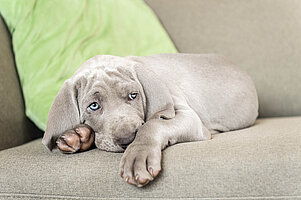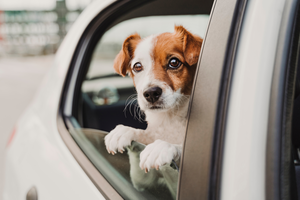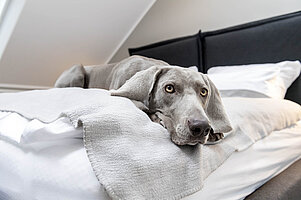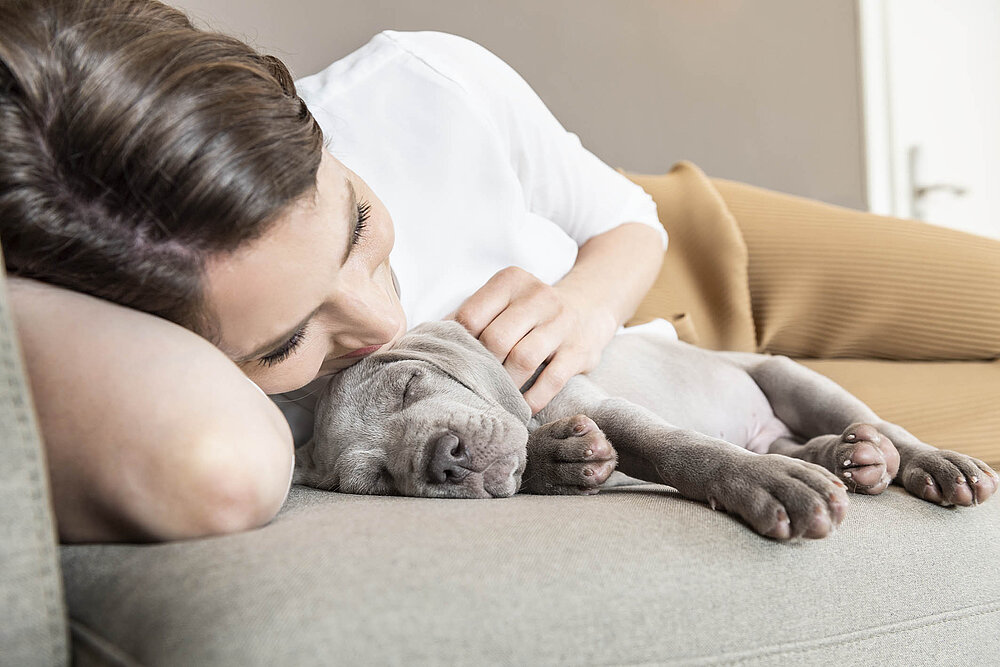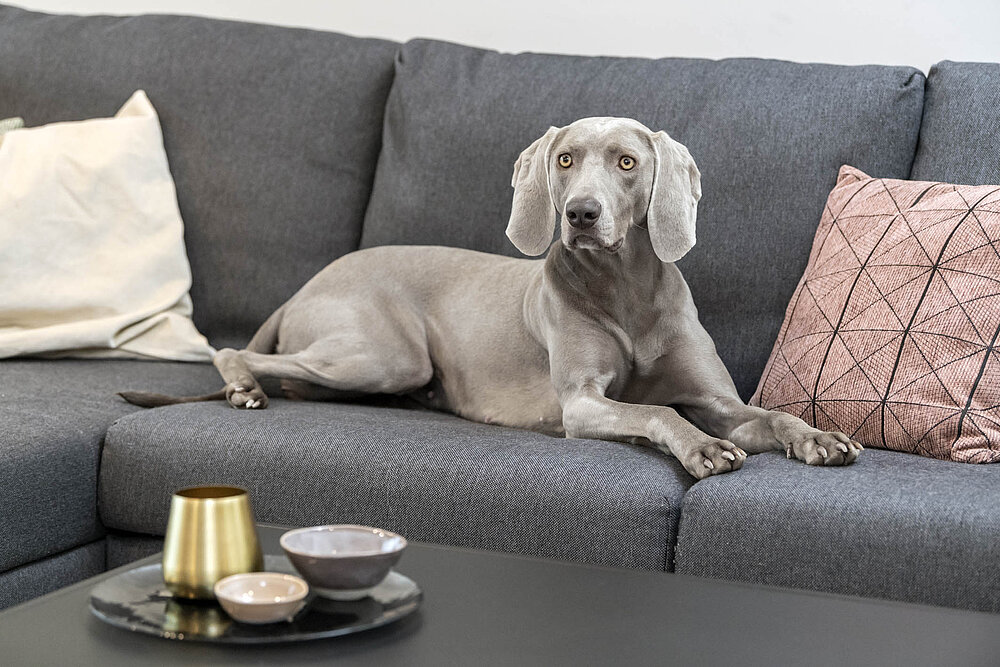
What to do if your dog is incontinent?
It starts with a few drops, then a puddle here and there – incontinence among dogs creates extra cleaning work and therefore causes stress for dogs and their owners alike. This article tells you what causes incontinence and how to tackle it.
If your dog has trouble with its waterworks, there could be several causes. First of all: how old is your dog? Younger dogs tend to have trouble controlling their bladder, especially when they get overexcited. Do you come across wet patches even though there’s no cause for excitement? Some good house-training could help with this. You should also make sure that your dog’s bladder insufficiency isn’t due to an illness. This is more likely to be the case for older dogs.
Dog incontinence: caused by an illness
There are many illnesses which could affect your dog’s bladder. The best-known one is undoubtedly a bladder inflammation, but other urethra disorders, nerve problems, tumours or hormone imbalances can also trigger incontinence. In this case, the problem is referred to as ‘secondary incontinence’, as the bladder weakness is symptomatic of another illness. Your vet can clarify whether the problem is due to one of these treatable disorders or if age is simply the reason for your pet’s accidents.
After all, as dogs get older this can have various consequences on their physical condition. Some only end up with a grey muzzle, whereas others suffer from arthrosis-related problems when standing up or pass urine without realising it.
Spayed bitches are most at risk of this. Experts believe that changes in their hormone levels make their tissue – and thus the urethral sphincter – slacken. Sometimes this also affects the anal sphincter, causing bowel incontinence. Dogs that are overweight tend to be more prone to incontinence. The age at which incontinence sets in varies a great deal depending on the individual dog.
Wet patches when standing up
The suspicion as to whether your dog is incontinent tends to arise gradually. You might start by noticing some slightly damp patches where your dog was sitting or a few drops on the floor. This is because many dogs suffering from incontinence pass urine unconsciously in their asleep, and tensing muscles when standing up can also make them lose a few drops. Bladder insufficiency can put a strain on relationships between owners and their dogs. After all, finding wet patches time and again means more cleaning work to prevent unpleasant odours.
Dealing with odours when dogs have incontinence
If your dog is suffering from age-related incontinence, you as the owner have to start by accepting it. Scolding or even punishing your dog is completely unjustified in this case. Your dog isn’t trying to annoy you; it itself feels uncomfortable that it no longer has full control over its body.
To adopt a laid-back approach to accidents, it helps to know that there are some excellent cleaning products that can prevent unpleasant odours. For this purpose, we’d like to introduce you to Nature’s Miracle® whose bio-enzymatic formula eliminates unpleasant odours and stains. Simply wipe away the wetness, spray the affected area, wait 15 minutes then wipe clean with some kitchen towel. Nature’s Miracle® not only prevents odours from developing, it also actively fights the bacteria found in urine or excrement. That way you can rest assured that your home remains clean despite any little accidents.
Help for dogs with incontinence
There are various treatment approaches depending on the cause of your dog’s incontinence. If the problem is caused by hormone fluctuations after being spayed, medicinal therapies can sometimes deliver good results. If it’s due to a bladder inflammation, it can also be cured with medicine. If tablets don’t do the trick, some surgical measures can help, although these naturally involve risks. Many owners treat their dog’s incontinence with acupuncture or other naturopathic resources. In any case, your vet is the right person to advise you accordingly.
Everyday life with an incontinent dog
During the transition stage, or if your dog ends up becoming permanently incontinent, there are some things that can help make life easier for you and your dog.
Dog nappies are a handy way of preventing wet patches in your home, but they do have a few disadvantages. Firstly, most dogs aren’t very keen on wearing nappies. It’s therefore worth spending some time and effort slowly introducing nappies to your dog and allowing it to get used to them. Secondly, wearing nappies for long periods can lead to skin irritations or even inflammations. Therefore, dog nappies shouldn’t be used permanently or without any breaks. They’re handy for staying ‘dry’ overnight or for preventing accidents when in a restaurant or visiting friends, for example.
What’s more, there are a few more ways to spare the (cleaning) stress for you and your dog.
- Take your dog for plenty of walks (they don’t have to be long) so that it can relieve himself outside, as older dogs simply need to go to the toilet more often.
- Keep an eye on your dog – if it’s agitated it may be showing you that it needs the toilet.
- Add a waterproof layer beneath your dog’s sleeping place to protect your flooring.
- In your dog’s bed, use blankets and covers that you can easily wash at a hot temperature.
- Make sure your dog always has plenty to drink at all times. Older dogs in particular need plenty of liquids so that their kidneys can work correctly.
- Feed your dog early enough to give it time to digest. That way, it won’t need to go to the toilet urgently in the middle of the night.
- Take your dog out one last time just before bedtime so that it can relieve itself.
‘Growing old is not for wimps’ – and this saying also applies to living with older dogs. After your faithful companion has remained by your side for so many years, it’s now up to you to make its final years ‘golden’. Keeping your composure when it comes to your dog’s incontinence will be a help to both of you.
Sources:
